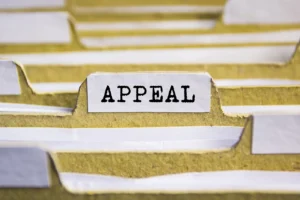
Arbitration as an Alternative in Family Law
Recently, we have had a number of cases where parties have good prospects to appeal, but a decision has been
Call us on
As matrimonial lawyers, we are often exposed to and hear stories from our clients about the incidents of domestic violence within relationships that have gone wrong. We hear stories and witness firsthand accounts about how children are witness to such violence and the detrimental effect this has on their upbringing.
Recently, Brett Hartley was interviewed by the Queensland Law Society’s Proctor magazine and expressed his concerns about the plight of women who suffer domestic violence in Australia being a major human rights failing in modern day Australia.

Most of us go about our daily business and are bought up now in an educated and tolerant manner. However, most of us do not appreciate the following three factors in relation to domestic violence:-
If you are one of those who think that domestic violence is under control and think that children are well educated and shielded from it in today’s modern society, then think again.
Statistics tell us that one in four women experience family violence and one in three women experience family violence by a former partner. 50% of those women had children in their care and 34% said that their children had witnesses the violence. Almost one woman is killed each week by her current or former de facto partner. Family violence costs Australia 1.1% of its GDP and by 2021/2022 family violence will cost $15.6 billion to the Australian economy.
Community attitudes are not getting much better. Australian’s continue to believe that family violence can be excused if a man’s partner makes him look stupid or insults him in front of friends.
If a female partner ends or tries to end the relationship, the violence perpetrated upon her is often understood by many to be just a temporary loss of control and the male perpetrator regrets it; such behaviour seems to be acceptable. Respondents to surveys still remarkably hold to believe that most women can leave a violent relationship if they really want to and even more disturbing is the statistic that most people find it hard to understand why women stay in a violent relationship. Many believe that women fabricate violence allegations to improve their financial prospects in family law proceedings; this is of course nonsense. It is disturbing that today’s community still holds such arcade beliefs about violence against women.
Of even more concern to all of us (especially those of us who are parents) is that one in four children in Australia have witnessed violence against their mothers or step-mothers. Children often witness or are exposed to incidents of family violence. It is not an isolated incident that occurs every day in so-called “normal” families. Close to three quarters of all people who report violence in their relationship say that the children were exposed to it or witnessed it in some form or another. Police statistics confirm that children are often present at family violence incidents and when emergency services attend.
The incidence of violence in both children proceedings and in property proceedings before the Family Court has direct relevance and an impact on outcomes. However, the signs to legal implications and consequences which we as family lawyers deal with every day, shows there is a broader and more concerning impact that on our young children and on those women in our society who deserve recognition and help.
Family violence in any form (including non-physical abusive behaviour such as emotional or psychological abuse, financial abuse, and social abuse) can never be tolerated by modern day Australians. We all have a duty to educate and be vigilant about this ever growing dark blotch in our human rights record.
Most of us go about our daily business and are bought up now in an educated and tolerant manner. However, most of us do not appreciate the following three factors in relation to domestic violence:-

Recently, we have had a number of cases where parties have good prospects to appeal, but a decision has been

Recently, we have had a number of cases where parties have good prospects to appeal, but a decision has been

Recently, we have had a number of cases where parties have good prospects to appeal, but a decision has been

© 2024 Hartley Family Law – All Rights Reserved | Privacy | Terms & Conditions

The Privacy Statement of the Company is incorporated into these Terms and Conditions. The Company respects the privacy of all its customers and business contacts. The Company is subject to the requirements of the National Privacy Principles which are contained in the Privacy Act.
1. How is personal information collected?
Your name, email address and phone number are collected on the contact form to allow the Company to contact you.
If you email or phone the Company directly, then the Company may record your personal details.
Your personal information may be used to:
a) Improve service to you, the customer
b) The Company may use personal information about you for marketing and research purposes. If you do not wish this to occur, please contact us and we will ensure this does not occur
c) Your personal information is not disclosed to any organisation outside of the Company.
2. Will personal information be given to anyone else?
The Company does not sell or provide your personal information to any other company.
3. Security of personal information
The Company employees are required, as a condition of their employment, to treat personal information held by the Company as confidential, and to maintain the confidentiality of that personal information.
The Company protects the personal information it collects in a secure database.
4. Access and correction
You can access your data at any time by contacting the Company directly.
You also have the right to ask us to correct information about you which is inaccurate, incomplete or out of date.
We ask you to contact the Company by email or phone using the Company contact details if you wish to access or correct any of your personal details.
5. Online privacy issues
To the extent that this Privacy Policy applies to online privacy issues, it is to be read as forming part of the terms of use for our website. When you deal with the Company whether online or otherwise, the Company takes its privacy obligations seriously.
6. Additional privacy information and how to contact the Company
The Company may change its Privacy Policy at any time.
For further information about privacy issues and the protection of privacy visit the Australian Federal Privacy Commissioner’s website at www.privacy.gov.au. If you feel that The Company is not complying with this Privacy Policy, or if you have other privacy concerns, please contact the company.